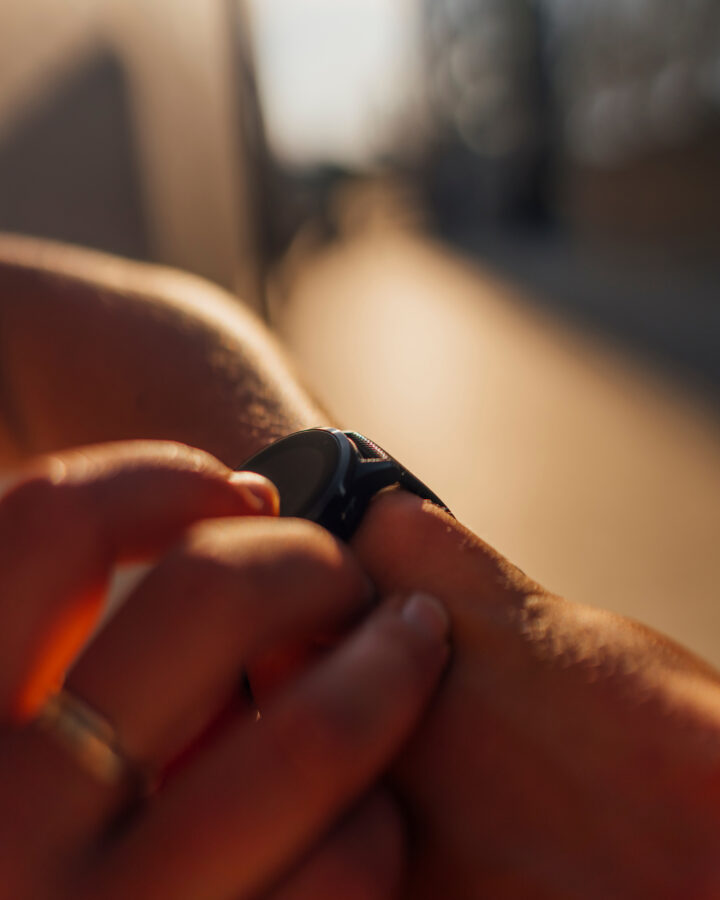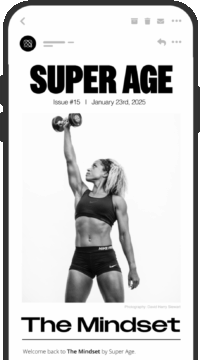The Best Wearables for Longevity: What’s Accurate, What’s Hype

Discover the most accurate wearables for sleep, fitness, and metabolic health backed by independent research. Plus: how to choose the right device for you.
In the U.S., the gap between our [helth-span]nounThe number of years you live in good health, free from chronic illness or disability.Learn More and lifespan is 12 years, according to a huge study published in JAMA Network Open. That means that the number of years we live that are healthy — without chronic disease or life-impacting injury or disability — is a dozen years shorter than the number of years we live before dying.
Scientists, health companies, and scientists at health companies are hoping technology will help fill that gap. Wearables promise to be your personal health dashboard: tracking sleep, activity, heart rate, and even metabolic shifts. But simply owning a device won’t magically make up that 12-year difference. What you do with the data is what matters.
Every day, it seems there’s a new wearable or device aimed at helping increase healthy [lon-jev-i-tee]nounLiving a long life; influenced by genetics, environment, and lifestyle.Learn More. Some of them are evidence-based and empowering. Others overpromise, underdeliver, and add more noise to already noisy lives. This guide is here to help you filter through the options and focus on what works for you, your goals, and your future self.
Are Wearables Accurate?
Wearable technology goes much further than step counts now, giving us real-time data about heart rate, blood oxygen level, blood glucose levels, how many calories we’ve burned, and how many minutes and hours we’ve spent in different stages of sleep.
Some devices are more accurate for certain measures, but fall behind on others, says James Navalta, Ph.D., associate professor of kinesiology and nutrition sciences at UNLV, where he researches the accuracy of wearable devices.
“Heart rate is usually pretty good across all devices, and step count is OK,” he says. “Calorie burn, well, nobody’s really cracked that yet.”
Wearables are fairly accurate for heart rate, within about 3 percent of lab measures. VO₂ Max readings are often overestimated by 15 percent and step counts tend to be underreported. Sleep stage tracking ranges from 50 to 65 percent accuracy, with devices like Oura hitting around 60 percent.
How to Choose the Right Wearable for You
With dozens of wearables promising to optimize your life, it’s easy to get swept up in sleek design and big claims. But the best device for your healthspan isn’t the one with the most features. It’s the one that fits your goals, habits, and mindset.
- Get Clear on What You Want to Measure: Whether you’re looking to improve sleep, monitor blood glucose, increase daily movement, or train smarter, the best wearable for you depends on what you want to change. Start with a specific outcome. Vague intentions lead to vague results.
- Know Your Device’s Strengths and Limits: Not all devices are built on sound science. Look for peer-reviewed studies or third-party evaluations. Avoid tools that rely solely on influencer endorsements or company-funded white papers. Some devices are excellent for tracking sleep but less reliable for fitness feedback.
- Track the Trend, Not the Number: Even accurate devices come with a margin of error. The key is consistency. If your tracker undercounts steps by 10 percent, it likely does that every day. That means you can still trust the direction you’re moving. Consistency and progress, not precision, are what supports long-term change.
- Choose What You’ll Actually Use: The most advanced sensor means nothing if it stays in the drawer. Consider comfort, convenience, and cost. The best wearable is the one you’ll use regularly and intuitively.
- Don’t Get Overwhelmed by the Data: Research shows that constant alerts and health tracking, especially from wearables, can increase anxiety, lead to second-guessing symptoms, and drive up unnecessary medical use. This kind of cognitive overload is a form of data fatigue, and it’s real. Here’s how to navigate:
- Choose one or two metrics to focus on.
- Check your data once a day, not constantly.
- Trust how you feel, even if the numbers disagree.
- Take breaks from tracking to reconnect with your body’s own signals
The Best Wearables For Longevity
These tools have shown strong performance in independent research and offer practical value for core longevity goals:
Best Sleep Tracker:
WHOOP
(second place tie: Oura Ring and FitBit Inspire HR)
Here’s why: The WHOOP is very accurate: In an analysis of three different studies comparing the WHOOP to two other wrist-worn wearables, the WHOOP came closest to matching the lab equipment on total sleep time, as well as in measuring deep and light sleep stages, which is why WHOOP is the Super Age pick.
Now, in a 2022 study comparing six wearables on how well they determined stages of sleep, Oura rings were the best, but still only 60 percent accurate compared to laboratory equipment. Other devices in the study were 50-65 percent accurate.
In another study comparing multiple wearables in a home setting, instead of in a laboratory, the Fitbit Inspire HR was almost exactly as good as the Oura ring at determining how much study subjects were asleep or awake: it was just one percent less accurate. But in another study of the same kind that looked at naps, the Oura missed more of the daytime sleep sessions altogether than the Fitbit. And at $99, it’s hundreds of dollars cheaper than the ring.
Bottom line: All have limitations: When it comes to tracking sleep stages, basically all sleep trackers are middling at best. They’re accurate only slightly more than half the time, and with wide variability.
Best VO₂ Max Monitor:
Lab studies show that Apple Watch significantly overestimates or underestimates VO₂ max, while Fitbits fail to match equations done without exercise testing. Garmin models, including the discontinued Forerunner 920XT and Fenix 6, have been found in lab tests to provide VO₂ max estimates closest to lab results. In the latest study, published in January 2025, the Garmin Fenix 6 was very close to lab levels on [vee-oh-too maks]nounA measurement of how much oxygen your body can use during exercise.Learn More, but fell short on its display of blood oxygen levels.
Best Step Counting:
Apple Watch Ultra 2
(second place FitBit Inspire HR)
Hip-worn pedometers are generally more accurate than wrist wearables for step counting, with Fitbit devices slightly outperforming Apple Watch in large analyses. However, Apple Watch is the most accurate wrist-worn device for heart rate tracking, making it a strong choice for overall fitness monitoring. While its step counting isn’t the best, its heart rate accuracy provides a valuable advantage for users focused on both activity tracking and cardiovascular health.
Wearables offer powerful insights, but their effectiveness depends on choosing the right device and understanding their limitations. Take the data with a grain of salt.
Read This Next
The information provided in this article is for educational and informational purposes only and is not intended as health, medical, or financial advice. Do not use this information to diagnose or treat any health condition. Always consult a qualified healthcare provider regarding any questions you may have about a medical condition or health objectives. Read our disclaimers.

